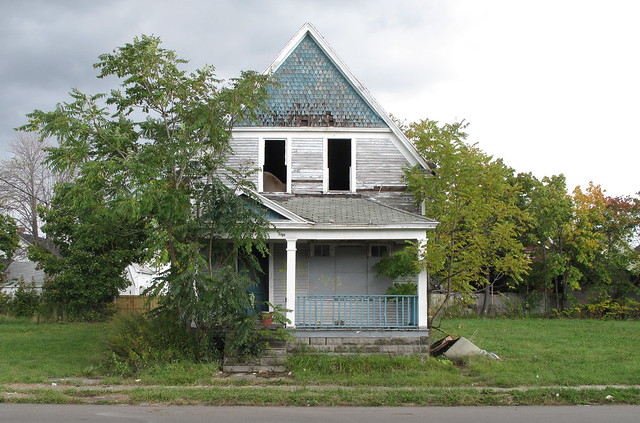Jeff Simon refers to Buffalo's urban prairie for the first time in today's Buffalo News.
From Jeff Simon:
“The Urban Prairie.” It’s a phrase I’d never heard before. A friend told me that it came from an urbanist she knows as we drove through Buffalo’s East Side on the way back from dinner. I was looking for vestiges of well-remembered landmarks…or at least their sites. So many were gone, replaced by huge, empty, snow-covered plains between buildings that really DID look like some sort of urban prairies. read the rest...
One of the most amazing reads about what has vanished on the City's East Side was written by New York Times writer Verlyn Klinkenborg - The Last Fine Time (1990). Here's that post from 2007 along with a map from back in the day and a current pic of what remains on Buffalo's ever increasingly larger urban prairie. The book's setting, Sycamore Street.
__________________________________________________________________________building index • fixBuffalo flickr • creative class • shrinking cities • americansuburbX
spacing toronto • infrastructurist • inhabitat


8 comments:
Never heard the phrase urban prairie. Hmm. WTF do they read over there at the Snooze?
The term 'urban prairie' goes back to at least the 1980s. While places like Buffalo and Detroit get attention for these areas, I remember driving through many towns in North Dakota that were entirely abandoned and had signs indicating such. In many areas, the only grocery shopping options are the 7-11 type stores on the interstate highways. Indeed, it's not too many years ago that news articles appeared questioning whether all of North Dakota should be delisted as a state and transition to 'territory' status. Maybe, it's hard to fathom but when you drive through lonely North Dakota it's not a far-fetched idea.
The urban prairie is a depressing sight for Buffalo but, fortunately, this is not the end of the world. Buffalo won't disappear. I hope photographers and writers fully document this phenomenon because it's an important point in the city's history that must be recorded for future generations.
Personally, I will always attribute “Urban Prairie” to our own David Torke.
What I found of interest in Jeff Simon’s commentary is that I had to re-read the part where he mentions where he is from; I thought he meant he was from the State of Delaware because I could not fathom anyone living in Buffalo who is shocked by the urban decay of the East Side – is the “Delaware District” cloistered?
Perhaps Buffalo has implemented the shrinking city program, not by design, but by default.
Unrelated comment; I loved the newest buzz word for urban decay – Deferred Maintenance – learned that from the previous David Torke article!
Hi, David,
I saw that Jeff Simon piece, too and thought of you. Wonder who the friend was who is apparently acquainted with both of you.
I just logged in to the Buffalo News database (now available with your BECPL library card) and I found "urban prairie" used for the first time in an editorial in 1999:
TURMOIL ON STAGE
The Buffalo News - Tuesday, August 17, 1999
Too often, downtown after 5 p.m. and on weekends looks like a desolate urban prairie . If that's ever going to change, the city will have to attract suburbanites during non-work hours. And one of the best ways to do that -- as demonstrated by the Chippewa Street renaissance -- is with entertainment.
There were only two other occurrences after 1999.
Not surprising that he knows little about Buffalo; I just started a new job in the City, and my employers cannot even picture where I live - even though it's about 10 blocks away! (They all live WAY out in the exurbs)
I cannot find a name like "Jeff Simon" owning property in Buffalo; is that a fake name ?
in the 1930s, James T. Farrell wrote his great, if harrowing, "Studs Lonigan" trilogy, now deservedly available in the Library of America: ISBN 978-1-93108255-6.
Throughout the trilogy, which takes place in the Irish slums of South Chicago. Farrell and his characters regularly refer to any vacant lot or bit of ground as the "prairie." Even though I thought this was appropriate for Illinois, which is in the midwest, I was astonished at its use in an urban setting. But Farrell does repeatedly use it that way. I've never seen it so used elsewhere.
Incidentally, one of the distinguishing features of "Studs Lonigan," aside from its gritty psychological realism, is that it's also what can only be thought of as a love poem to the city of Chicago. I'd never before been so aware that a city could be almost character in the novel, not just a setting. The people may be messed up, but the scene they inhabit is near paradise, which only increases the reader's feeling of their tragedy. This poeticism of Farrell's did a lot to help crystallize my sense of love for my own city, Buffalo.
Indeed, Farrell superscribes the trilogy with a quotation from Plato that, in the way he uses it, powerfully expresses the importance of the city to us:
"Except perhaps some special nature, a man could never be good unless as a boy he already played among things that are beautiful and ran eagerly after everything like that."
-- Sokrates,
in Plato;
Republic, 558b
The life will be very beautiful if I could have such a house for my family.
Maybe I'll live in such a house tonight in my dream.
The Last Fine Time is a wonderful book in which mental images come into focus, fade out, and are replaced with another snapshot. The last time I was on Sycamore a few weeks ago I made it a point to look for the spot of 722.
Post a Comment